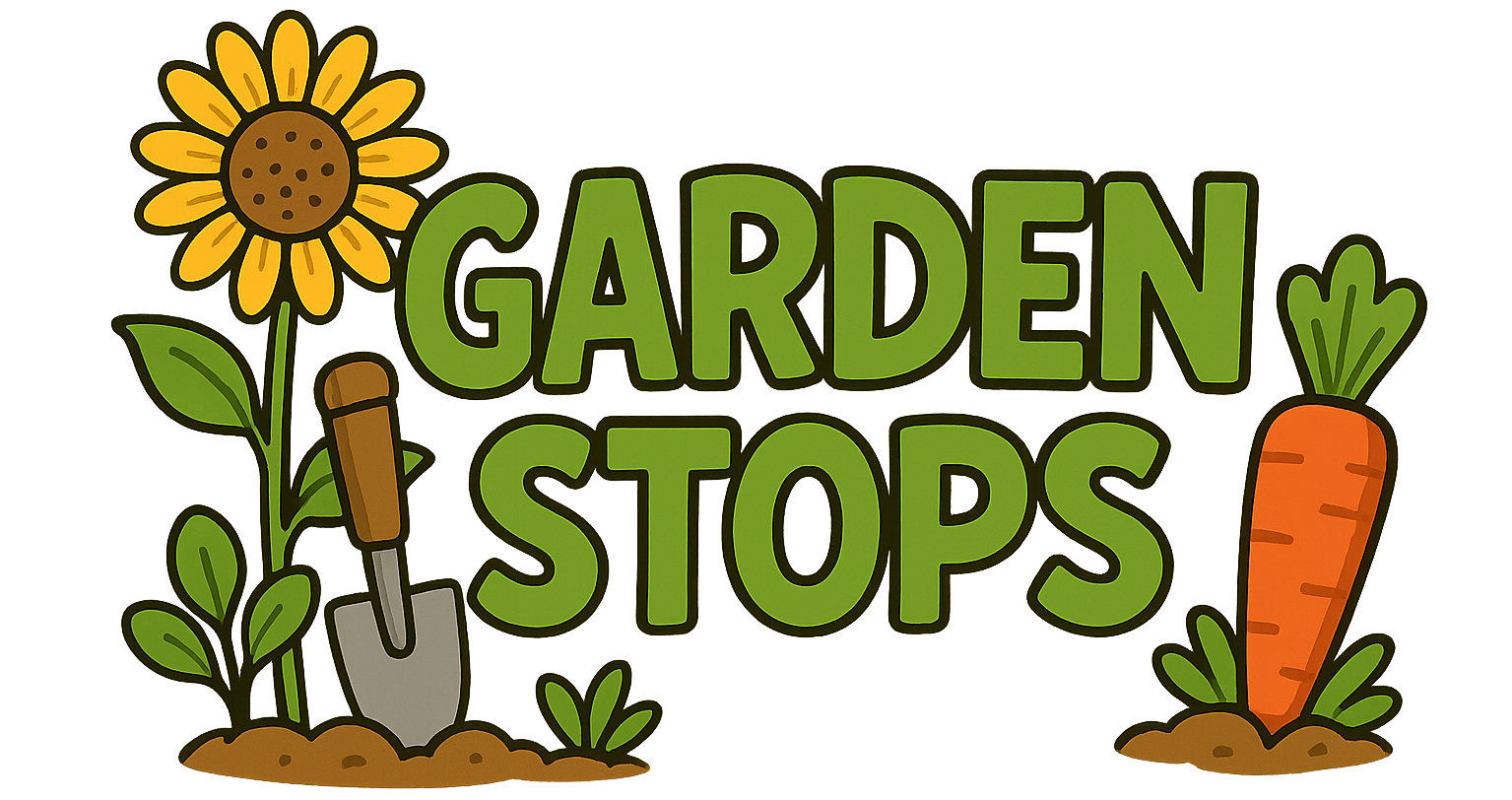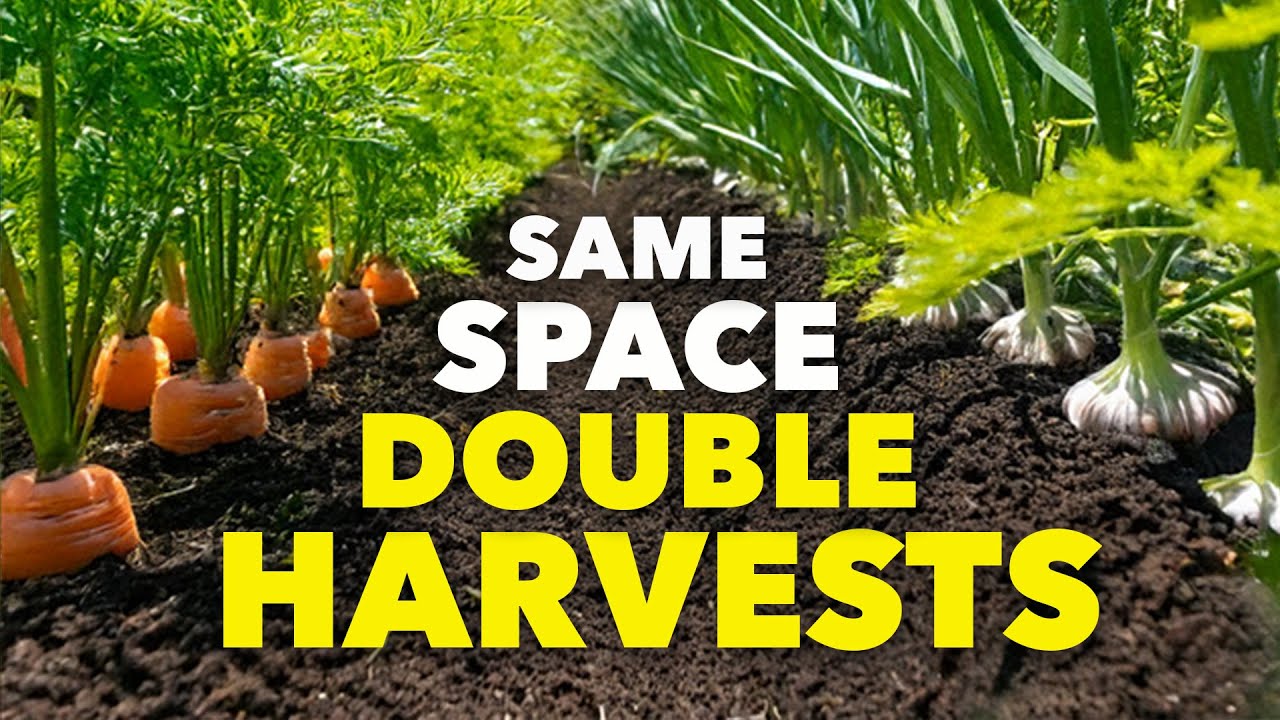Discover the easy secret that can double your harvests and protect your crops like a pro. With this simple trick, you’ll be able to maximize your yield and keep your plants safe from pests and diseases—transforming your gardening game today!
Introduction
Imagine stumbling upon a little secret—almost laughably simple—that could instantly double your garden’s bounty without demanding more space or a herculean effort. It sounds like the kind of fairy tale advice a wise grandmother might whisper over her morning coffee, but in the world of tiny yard gardening and pocket-sized plot innovation, it’s a game-changer. If you’re cramped for space but hungry for bumper harvests, this article is your backstage pass to transforming your garden into a veritable food factory.
From the first sprout to the harvest festival of your dreams, there’s a sneaky trick that transforms the way you think about moving dirt. Think of it as a crafty, almost mischievous way of doubling your crop yields—no magic beans involved, just clever planning and a dash of horticultural know-how. Whether you’re an urban dweller with limited balcony real estate or a suburban gardener aiming to get more value from a tiny backyard, this technique is your new best friend. So grab your favorite watering can, because we’re about to turn your petite garden into a powerhouse of productivity.
The Power of Smart Garden Design and Space Maximization
When you look at your small yard or balcony, it’s easy to feel overwhelmed—like trying to squeeze a submarine into a teacup. But here’s the truth: smart garden design is less about the size of your space and more about how craftily you use it. Think of your garden as a Swiss Army knife, versatile and packed with potential, just waiting for you to unlock its secrets. The secret sauce? Vertical gardening, indeed, but also savvy layering and intercropping techniques.
Maximize your garden space for higher yields by planting in layers—think of it as a well-organized wardrobe. You have towering sunflowers or corn in the background, shorter lettuce and herbs in the middle, and sprawling ground covers or root vegetables in the foreground. This layering method allows you to squeeze more productivity out of every inch, and surprisingly, it reduces pest problems by creating a natural barrier. It’s almost poetic how nature lends its hand—if you know where to look—making each square foot work overtime. And the best part? You get more food output from your small plot without expanding a single inch.
Now, if you’re in a pinch for space, don’t dismiss container gardening as a mere last resort. Instead, view it as a form of customizable, portable farming. Discover tips for tiny yard container gardening that turn modest pots into productive pockets of green. Whether it’s stacking containers vertically or choosing compact varieties, the goal is to make smarter use of every inch you have. Think of it as turning your yard into a multi-layered puzzle—one with pieces that, when assembled cleverly, double your harvests and safeguard your food supply.
The Simple Crafty Technique That Doubles Your Crop Yields
Here’s where the magic starts: a simple, crafty technique that often flies under the gardening radar—companion planting. It’s the gardening equivalent of a well-choreographed dance, where certain plants pair up beautifully, boosting each other’s growth while ducking pests and diseases. If you’re curious about how to grow more in limited space, this classic method is your new secret weapon. Watching the video to see the technique in action reveals how combining tomatoes with basil or onions with carrots can increase yields significantly.
What makes this technique so effective? Plants have their own social networks. Some repel pests, others attract pollinators, and a few even “talk” to each other through subtle chemical signals in the soil. By practicing smart companion planting, you’re essentially giving each crop a support system, a cozy neighborhood that encourages them to thrive. It’s akin to building a little farm’s version of a tight-knit community—the kind where everyone benefits, especially your harvest.
And here’s an unexpected bonus—this approach also makes your gardening process more resilient. Your veggies are less prone to diseases and pests because you’re not relying on chemical sprays or monoculture (planting heaps of the same thing). Instead, you’re creating a symbiotic environment, maximizing your garden’s potential and increasing your crop yield without expanding your garden size. As a bonus, you can see more of this technique in practice by watching the detailed garden plan you can generate with the GrowVeg Garden Planner for free with no obligation. It’s a game-changer for planning smarter and harvesting ginormous harvests from tiny spaces.
How to Grow More Food in Small Spaces Effectively
Growing more food in constrained environments isn’t just a matter of luck—it’s about making every square foot count. Think of your garden as a bustling urban jungle, where each plant has to hustle just to get a smidge of sunlight or nutrients. The key is strategic planning, coupled with a keen eye for efficient planting. For example, staggering planting schedules ensures continuous harvests, turning your small patch into an all-you-can-eat buffet season after season.
Learn how to grow in small spaces effectively by choosing high-yield varieties tailored for limited areas. Compact cherry tomatoes, dwarf beans, and mini zucchinis are just some of the superstar candidates when space is at a premium. These varieties often produce more per plant than their full-sized counterparts—sometimes enough to feed your family for weeks—and they require less fuss and less room to flourish. Download a free abridged version of Ben’s gardening book for detailed tips on choosing the right cultivars and sequencing your planting like a pro.
Plus, embracing vertical gardening and containers broadens your horizons. You’re no longer confined to flat beds. With some creative use of trellises, hanging baskets, or stackable planters, your garden becomes a three-dimensional playground. Use the free grow planner to map out your tiny yard or balcony, so no space is wasted. Smarter use of every inch not only increases your crop yield but boosts your gardening efficiency—more food, less effort, and significant cost savings. It’s about working smarter, not harder, to grow more food with less space and effort.
Watch Out! These Tips Will Transform Your Yield Game
The secret to doubling your harvests isn’t just in clever planting—it’s in small, thoughtful tweaks that compound over time. Take a moment to step back and really observe your garden. Are your plants competing for space and nutrients? Or are they harmonizing into a symphony of productivity? Implementing these expert tips can turn your modest garden into a food fortress, making your efforts look almost magical to outsiders.
One of the most effective tricks? Soil rejuvenation. Regularly amending your soil with compost or organic matter will supercharge plant growth while reducing the need for chemical fertilizers. When your soil is happy, your plants thrive, and yields double—plus, it’s a cost-effective approach that aligns perfectly with growing more food with less space. Pair this with strategic crop rotation, and you’re in for a bumper crop season that defies the constraints of square footage.
And if you’re still wondering how to put it all into action, remember to use the free garden planning tools and resources available. Access a free, no-obligation trial of the GrowVeg Garden Planner and download a free abridged version of Ben’s gardening book. These tools help you visualize your garden’s potential, organize planting schedules, and incorporate companion planting strategies seamlessly. With a little planning and a sprinkle of ingenuity, you’ll be harvesting far more than you ever thought possible from a tiny plot.
Frequently Asked Questions
What is the simplest way to increase garden yields without enlarging the space?
The simplest way to multiply your harvests in a small space is through practiced companion planting. It involves pairing plants that support each other—such as basil with tomatoes—boosting growth and repelling pests naturally. Combine this with vertical gardening techniques like stacking containers or trellises; it turns one limited patch into a multi-layered, efficient food factory.
How can I use my limited yard to grow $1,000 worth of food?
By focusing on high-yield, compact varieties like dwarf tomatoes, greens, and perennial herbs, coupled with smart planning, you can maximize output. Using the free GrowVeg Garden Planner helps you map out your entire space and plant succession crops seamlessly. Combining these elements with a crafty use of containers and intercropping can turn a tiny yard into an unexpectedly lucrative farm.
What simple techniques make small gardens more productive?
Besides companion planting, enriching your soil with compost and practicing crop rotation are game-changers. Vertical gardening and stacked containers also allow you to grow more in less space. These techniques not only increase crop yield but also improve plant health, reducing labor and resources spent on pest control and fertilizers.
How do I successfully plan a tiny yard garden?
Use the free garden planning tools, like the GrowVeg Garden Planner, to visualize your space and plan planting schedules. Choose high-yield crops suited for small areas, and incorporate vertical and container gardening strategies. Map out your plants’ needs to ensure they thrive together, making use of every inch efficiently and effectively.
Can I really grow enough food in a small yard to cut costs and boost nutrition?
Absolutely. By maximizing crop yields through strategic planting and smart space management, you can significantly reduce grocery bills and increase your access to fresh, nutritious produce. Planning ahead and utilizing expert tips like crop rotation and soil enrichment ensures your small yard becomes a reliable, sustainable food source.
Final Thoughts
In the end, the secret to thriving in the smallest of gardens boils down to one principle: cleverness over size. You don’t need acres of land to produce a bounty that feeds your family, nourishes your soul, and perhaps even fills your wallet. With the right mindset, a sprinkle of ingenuity, and these simple, crafty tricks, you can turn even the most modest yard into a lush, productive paradise. Grow smarter, not harder, because in gardening as in life, it’s all about making the most of what you have. And if you approach it with a sense of humor and a dash of patience, your tiny garden may just outperform your wildest expectations.

